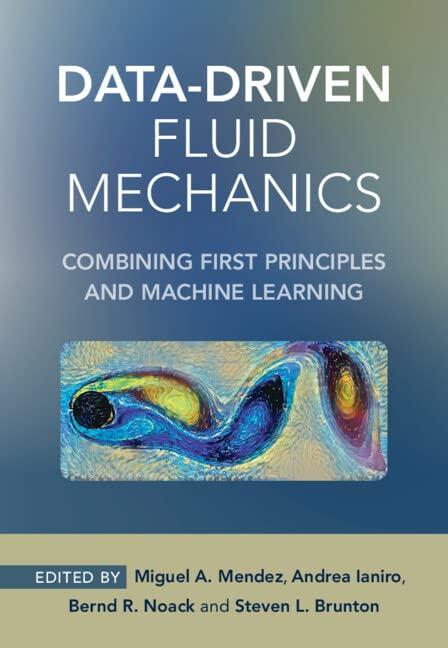Answered step by step
Verified Expert Solution
Question
1 Approved Answer
1. Consider a spherical molten magnesium droplet that burns in air via a surface reaction: Mg+0.5O2MgO. Assume the metal is non-volatile (this is not true,
 1. Consider a spherical molten magnesium droplet that burns in air via a surface reaction: Mg+0.5O2MgO. Assume the metal is non-volatile (this is not true, but it makes for a tractable, interesting problem). The product MgO is also non-volatile, and it immediately dissolves upon formation into the metal. The surface reaction and dissolving rates are very fast compared to the rate at which O2 can reach the surface. (Hint: This implies that the concentration of O2 at the surface is essentially zero. The surface acts like a black hole for O2.) (a) Find the rate at which oxygen is consumed by the reaction in gm/sec (i.e., the burning rate). Assume: particle diameter is 100 m, the gas phase is air, that properties can be evaluated as those of N2 at 1000K, and that the Lewis number is 1 . You should start with the species equation in spherical coordinates and perform the two integrations required to get the burning rate (paralleling the development from class), but note that the transformation to the "b" variable is not needed here. The surface boundary condition will be somewhat different, so reason it out. (b) Estimate the steady-state temperature of the droplet. You may make the assumption that the Nusselt number is 2 (corresponding to a sphere in a stagnant medium), so you can work with a simple convective heat transfer coefficient formulation. Note that radiation will be an important consideration. Assume the emissivity of the droplet is 0.5 (representing a mix of Mg and MgO. The environment is at 298K and the enthalpy of formation of MgO is 601,241kJ/kmole
1. Consider a spherical molten magnesium droplet that burns in air via a surface reaction: Mg+0.5O2MgO. Assume the metal is non-volatile (this is not true, but it makes for a tractable, interesting problem). The product MgO is also non-volatile, and it immediately dissolves upon formation into the metal. The surface reaction and dissolving rates are very fast compared to the rate at which O2 can reach the surface. (Hint: This implies that the concentration of O2 at the surface is essentially zero. The surface acts like a black hole for O2.) (a) Find the rate at which oxygen is consumed by the reaction in gm/sec (i.e., the burning rate). Assume: particle diameter is 100 m, the gas phase is air, that properties can be evaluated as those of N2 at 1000K, and that the Lewis number is 1 . You should start with the species equation in spherical coordinates and perform the two integrations required to get the burning rate (paralleling the development from class), but note that the transformation to the "b" variable is not needed here. The surface boundary condition will be somewhat different, so reason it out. (b) Estimate the steady-state temperature of the droplet. You may make the assumption that the Nusselt number is 2 (corresponding to a sphere in a stagnant medium), so you can work with a simple convective heat transfer coefficient formulation. Note that radiation will be an important consideration. Assume the emissivity of the droplet is 0.5 (representing a mix of Mg and MgO. The environment is at 298K and the enthalpy of formation of MgO is 601,241kJ/kmole Step by Step Solution
There are 3 Steps involved in it
Step: 1

Get Instant Access to Expert-Tailored Solutions
See step-by-step solutions with expert insights and AI powered tools for academic success
Step: 2

Step: 3

Ace Your Homework with AI
Get the answers you need in no time with our AI-driven, step-by-step assistance
Get Started


